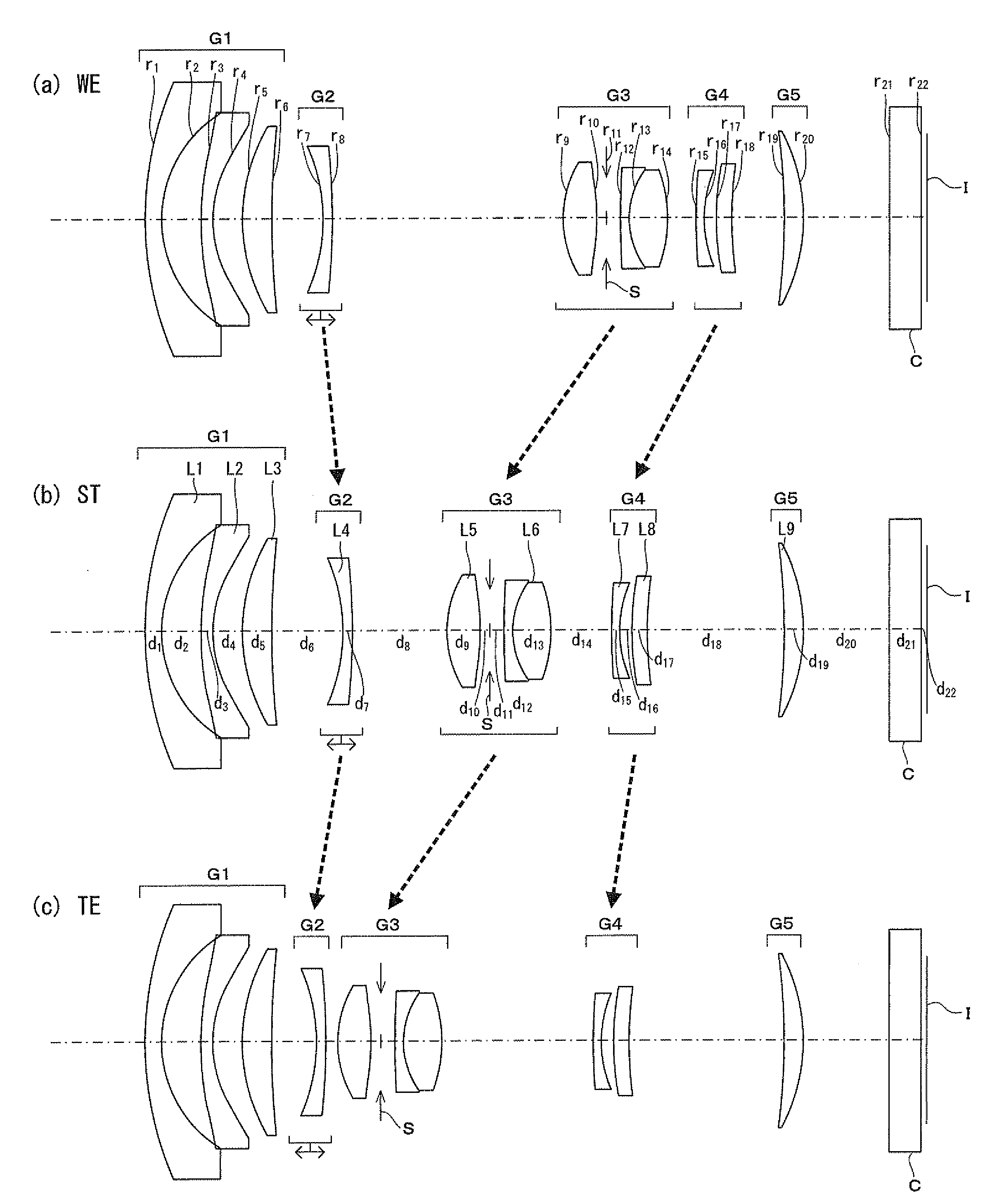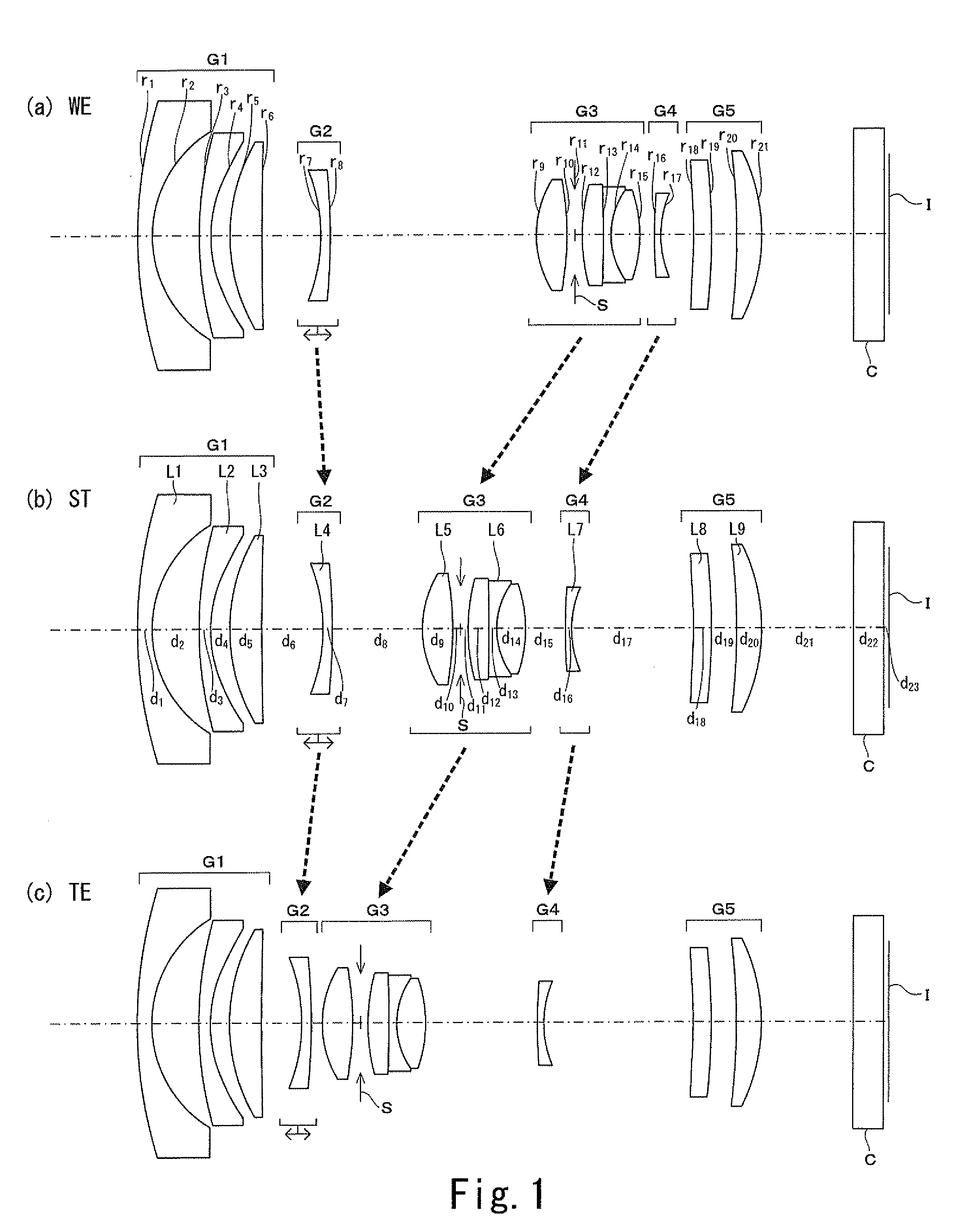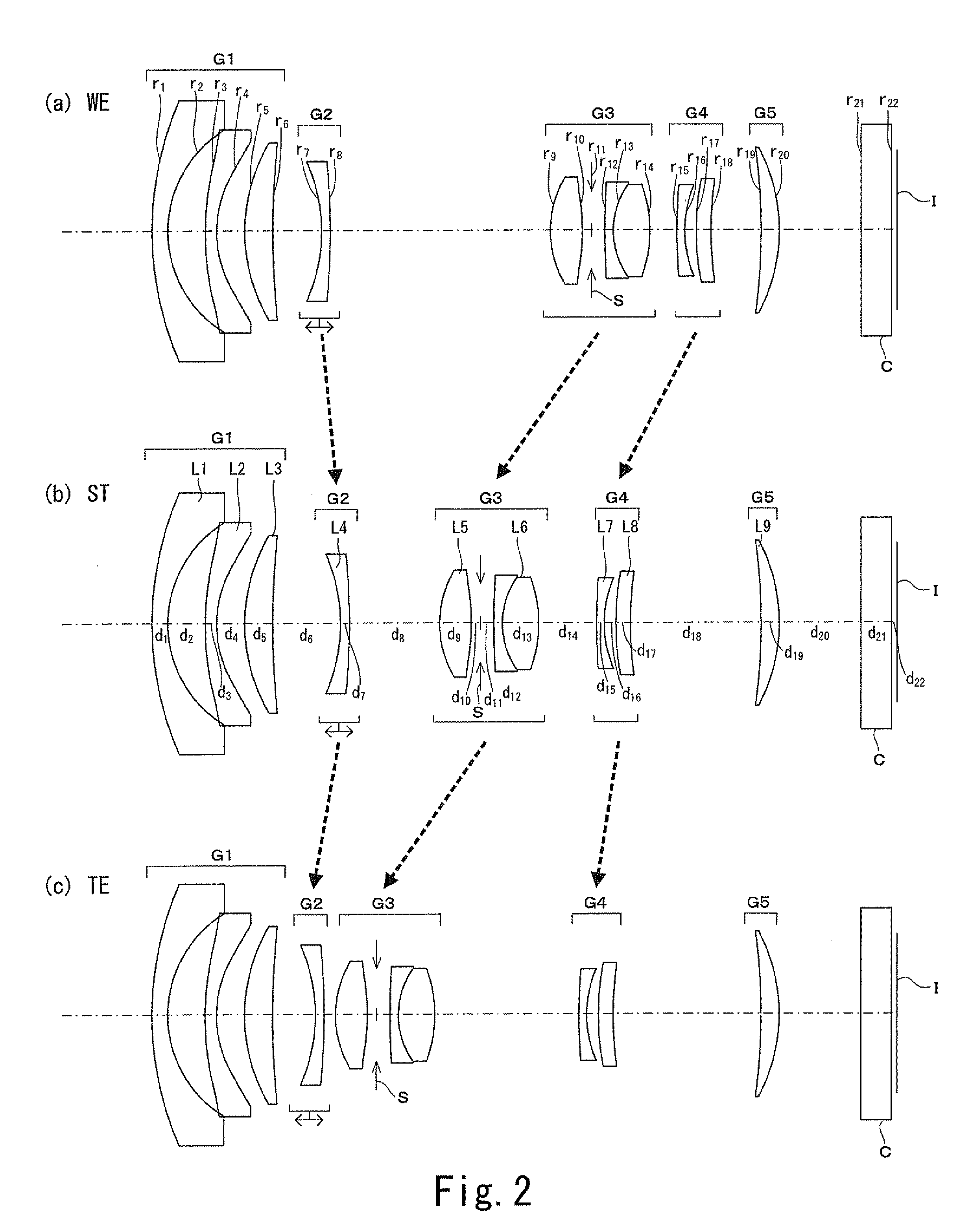Zoom lens
- Summary
- Abstract
- Description
- Claims
- Application Information
AI Technical Summary
Benefits of technology
Problems solved by technology
Method used
Image
Examples
example 1-1
[0300]FIG. 1 is a schematic cross-sectional view of the zoom lens of Example 1-1. As shown in FIG. 1, the zoom lens of Example 1-1 includes a first lens group G1 having a negative power, a second lens group G2 having a negative power, a third lens group G3 having a positive power, a fourth lens group G4 having a negative power and a fifth lens group G5 having a positive power arranged in the above mentioned order from the object side to the image side.
[0301]The first lens group G1 is formed by a negative meniscus lens L1 with its convex surface facing the object side, a negative meniscus lens L2 having two aspheric surfaces with its convex surface facing the object side and a positive meniscus lens L3 with its convex surface facing the object side.
[0302]The second lens group G2 is formed by a negative meniscus lens L4 with its convex surface facing the image side.
[0303]The third lens group G3 is formed by a positive double convex lens L5 having two aspheric surfaces, an aperture S a...
example 1-2
[0308]FIG. 2 is a schematic cross-sectional view of the zoom lens of Example 1-2. The zoom lens of Example 1-2 includes a first lens group G1 having a negative power, a second lens group G2 having a negative power, a third lens group G3 having a positive power, a fourth lens group G4 having a negative power and a fifth lens group G5 having a positive power.
[0309]The first lens group G1 is formed by a negative meniscus lens L1 with its convex surface facing the object side, a negative meniscus lens L2 having two aspheric surfaces with its convex surface facing the object side and a positive meniscus lens L3 with its convex surface facing the object side.
[0310]The second lens group G2 is formed by a negative meniscus lens L4 with its convex surface facing the image side.
[0311]The third lens group G3 is formed by a positive double convex lens L5 having two aspheric surfaces, an aperture S and a cemented lens L6 (lens block) of two lenses including a negative lens and a positive lens.
[0...
example 1-3
[0316]FIG. 3 is a schematic cross-sectional view of the zoom lens of Example 1-3. The zoom lens of Example 1-3 includes a first lens group G1 having a negative power, a second lens group G2 having a negative power, a third lens group G3 having a positive power, a fourth lens group G4 having a negative power and a fifth lens group G5 having a positive power.
[0317]The first lens group G1 is formed by a negative meniscus lens L1 with its convex surface facing the object side, a negative meniscus lens L2 having two aspheric surfaces with its convex surface facing the object side and a positive meniscus lens L3 with its convex surface facing the object side.
[0318]The second lens group G2 is formed by a negative meniscus lens L4 with its convex surface facing the image side.
[0319]The third lens group G3 is formed by a positive double convex lens L5 having two aspheric surfaces, an aperture S and a cemented lens L6 (lens block) of three lenses including a positive lens, a negative lens and...
PUM
 Login to View More
Login to View More Abstract
Description
Claims
Application Information
 Login to View More
Login to View More - R&D
- Intellectual Property
- Life Sciences
- Materials
- Tech Scout
- Unparalleled Data Quality
- Higher Quality Content
- 60% Fewer Hallucinations
Browse by: Latest US Patents, China's latest patents, Technical Efficacy Thesaurus, Application Domain, Technology Topic, Popular Technical Reports.
© 2025 PatSnap. All rights reserved.Legal|Privacy policy|Modern Slavery Act Transparency Statement|Sitemap|About US| Contact US: help@patsnap.com



